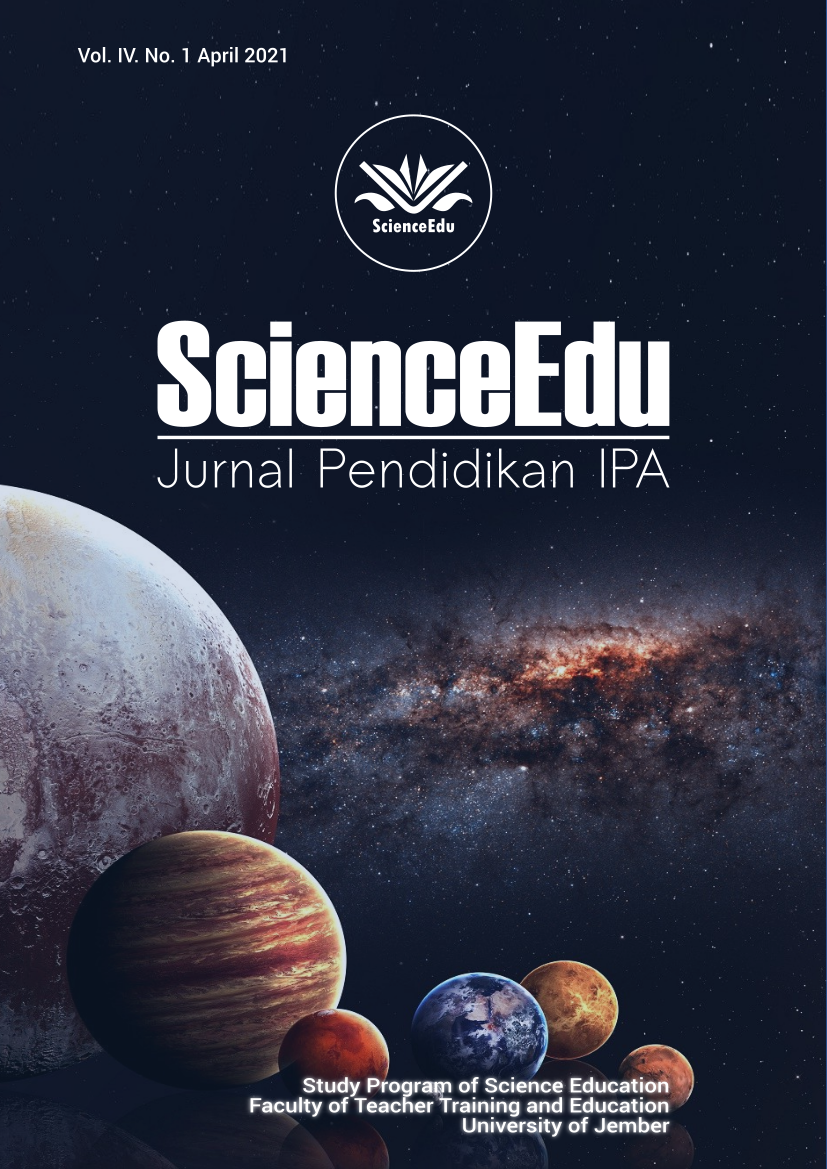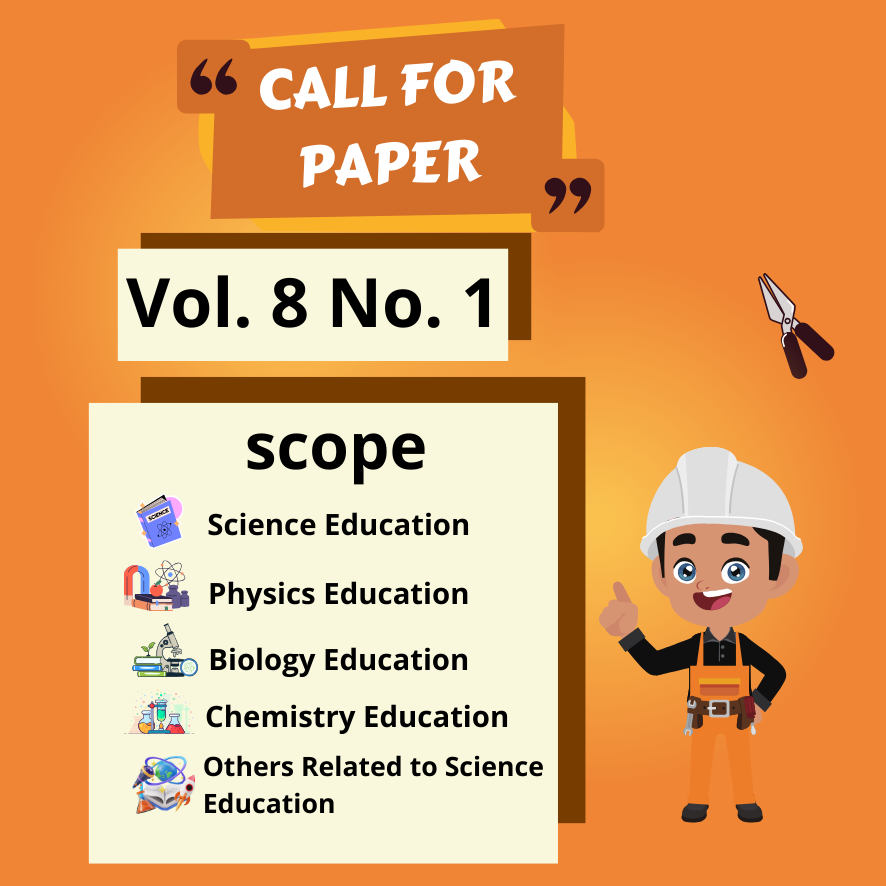LEARNING SCIENCE THROUGH ONLINE SYSTEM: WHATSAPP VS GOOGLE MEET PLATFORM
DOI:
https://doi.org/10.19184/se.v4i1.23604Keywords:
Google Meet, Science Learning, Student's Learning Outcomes, Whatsapp GroupAbstract
During the pandemic of COVID-19, the utilization of online platforms is essential for the learning process. This research aims to determine differences in student learning outcomes using the Whatsapp and Google Meet platforms in distance learning during the Covid-19 pandemic with Energy Material in the Life System of Junior High School Students. The type of research is experimental research. This study's sample was class VII A students totaling 34 students and class VII B students totaling 33 students—data collection using multiple-choice questions to measure student learning outcomes (posttest) and confirmation through interview. The results showed no difference in student learning outcomes using the Whatsapp and Google Meet platforms in distance learning during the Covid-19 pandemic. Students show different engagement through the two platforms.
Downloads
References
Ferdiana, S. (2020). Persepsi Mahasiswa tentang Penggunaan Media Daring pada Program Studi S1 Ilmu Gizi Sekolah Tinggi Ilmu Kesehatan Surabaya selama Masa Pandemi Corona Virus Disease (COVID-19). Indonesian Journal of Science Learning, 1(1), 5-12.
Milman, N. B. (2015). Distance Education. International Encyclopedia of the Social & Behavioral Sciences: Second Edition, 567-570. https://doi.org/10.1016/B978-0-08-097086-8.92001-4
Moallem, M. (2015). The Impact of Synchronous and Asynchronous Communnication Tools on Learner Self-Regulation, Social Presence, Immediacy, Intimacy and Satisfaction in Collaborative Online Learning. The Online Journal of Distance Education and e-Learning, 3(3), 55-77.
Rahartri. (2019). Whatsapp Media Komunikasi Efektif Masa Kini (Studi Kasus pada Layanan Jasa Informasi Ilmiah di Kawasan PUSPITEK. Visi Pustaka, 21(2), 147-155.
Sahidillah, M. W., & Miftahurrisqi, P. (2019). Whatsapp sebagai Media Literasi Digital Siswa. Jurnal Varia Pendidikan, 31(1), 52-57.
Sawitri, D. (2020). Penggunaan Google Meet untuk Work From Home di Era Pandemi Coronavirus Disease 2019 (Covid-19). Jurnal Pengabdian Masyarakat, 2(1), 13-21.
Stewart, A. R., Harlow, D. B., & DeBacco, K. (2011). Students' experience of synchronous learning in distributed environments. Distance Education, 32(3), 357-381. https://doi.org/10.1080/01587919.2011.610289
Sulaeman, N. F., Putra, P. D., Mineta, I., Hakamada, H., Takahashi, M., Ide, Y., & Kumano, Y. (2020). Engaging STEM Education for High School Student in Japan : Exploration of Perception to Engineer Profession. Jurnal Penelitian Dan Pembelajaran IPA, 6(2), 189–205. https://doi.org/10.30870/jppi.v6i2.8449
Uyanto, S. S. (2006). Pedoman Analisis Data dengan SPSS. Yogyakarta: Graha Ilmu.
Widiyanto, J. (2010). SPSS for Windows Untuk Analisis Data Statistik dan Penelitian. Surakarta: Badan Penerbit FKIP UMS.



